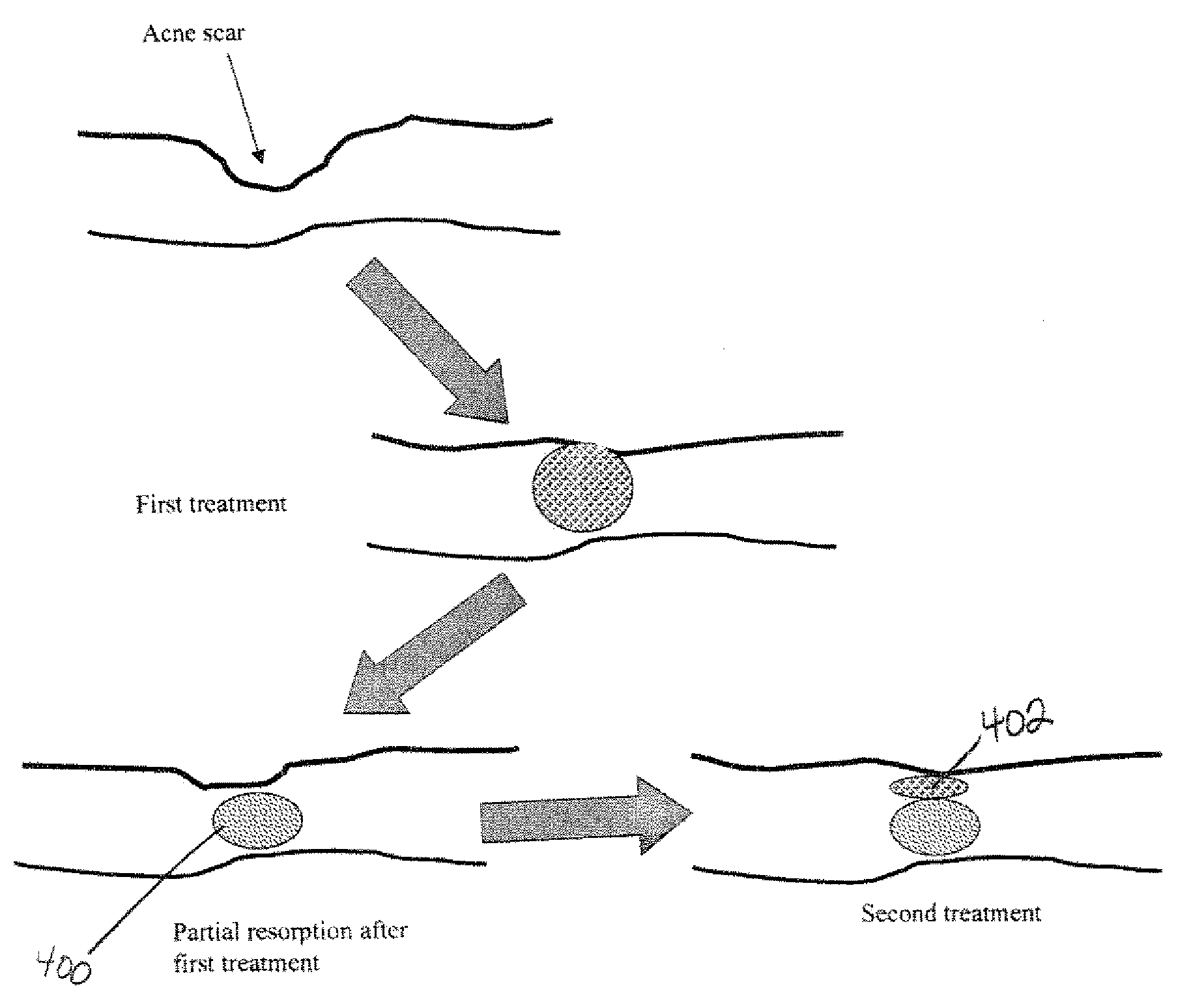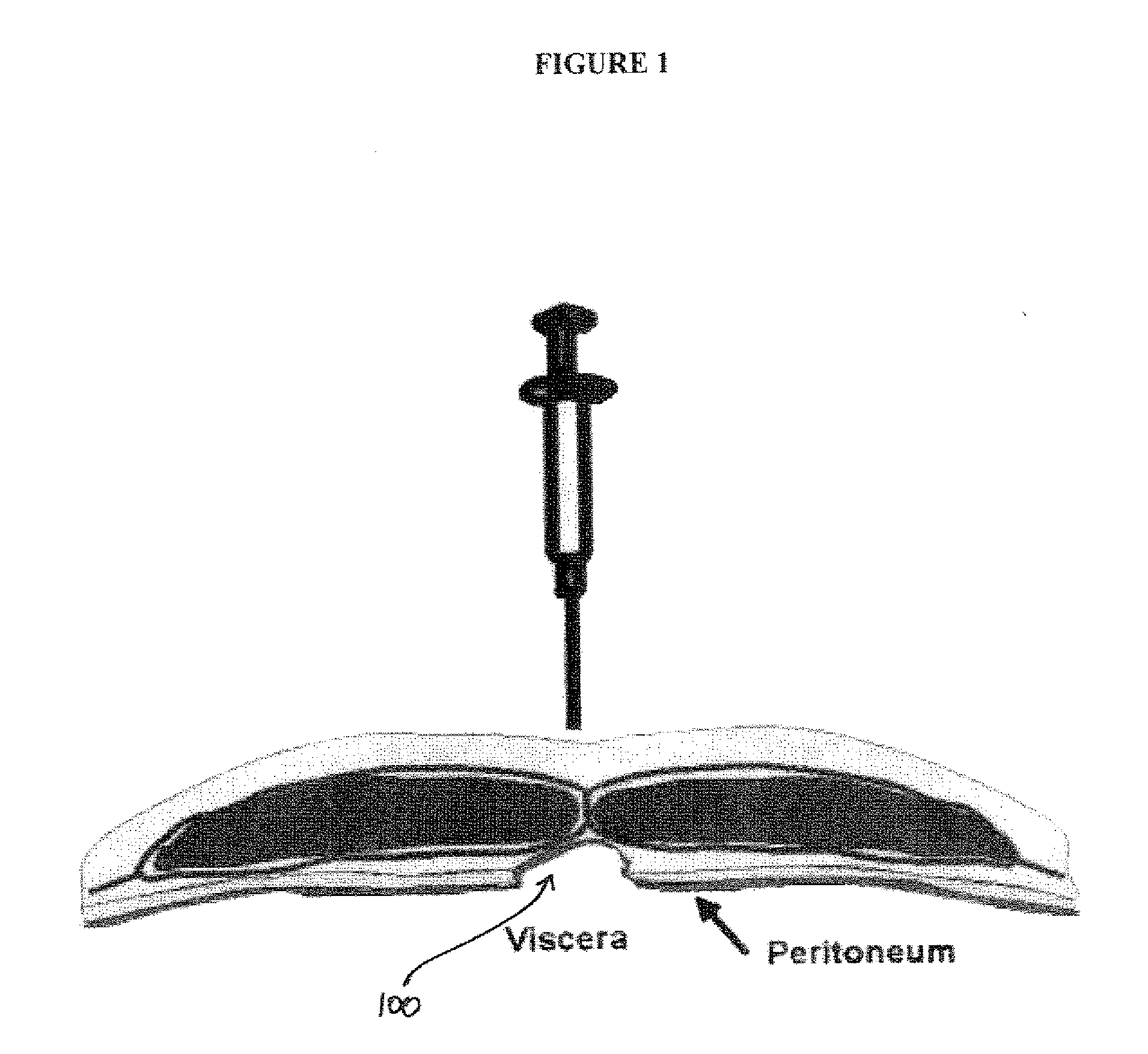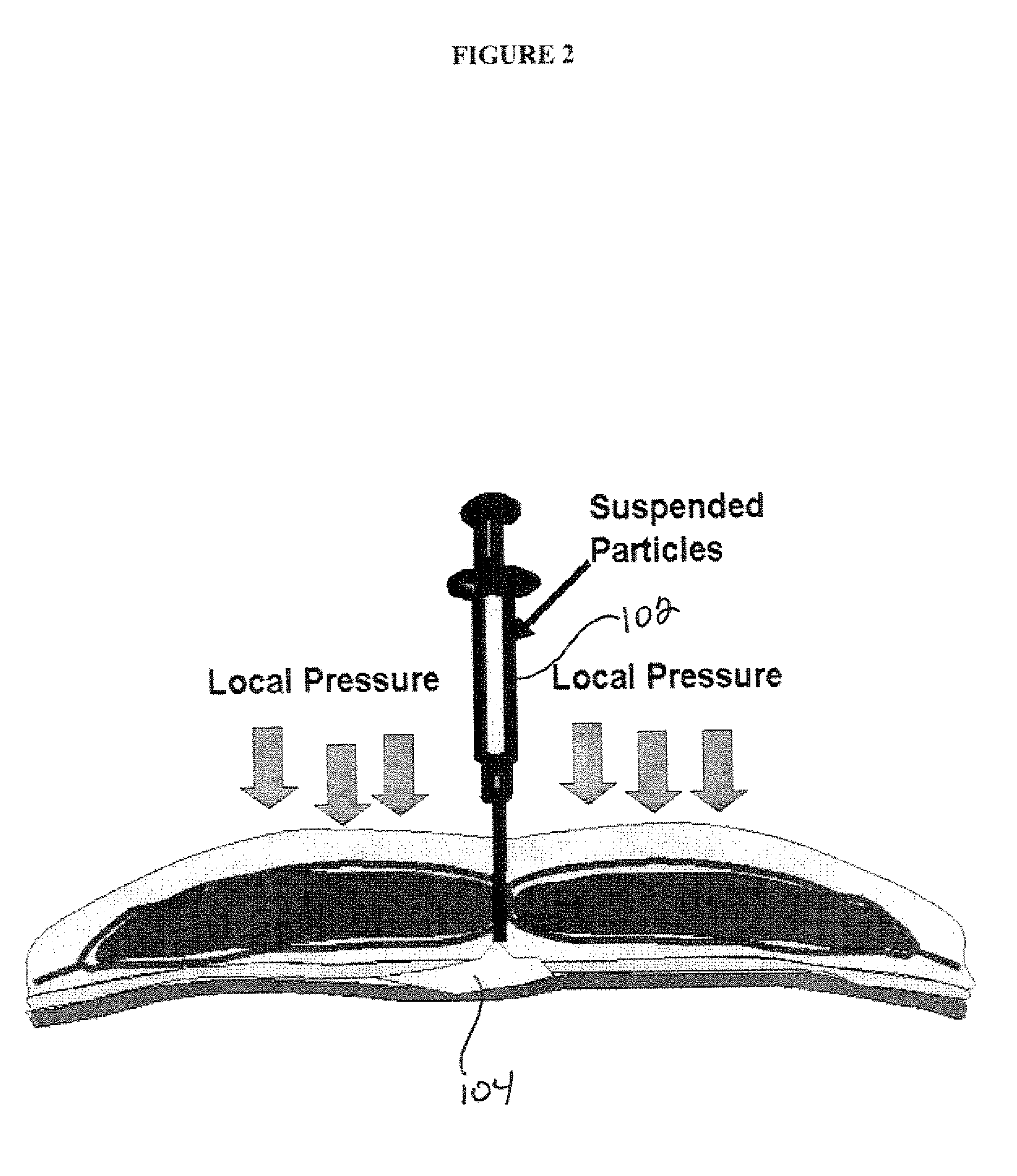Composition and Method For Treating Tissue Defects
a tissue defect and composition technology, applied in the field of tissue defect treatment devices and methods, can solve the problems of bulimia or tear, severe pain and other potentially serious complications, and general pain in open hernia repair
- Summary
- Abstract
- Description
- Claims
- Application Information
AI Technical Summary
Benefits of technology
Problems solved by technology
Method used
Image
Examples
example 1
[0035]A solution containing 100 mg of 35 micron diameter microparticles of polypropylene and 2 drops (50 mg) of surfactant Tween-60 was prepared. One thawed 5 ml vial of thrombin solution obtained from a Quixil™ kit (sold by Ethicon, Inc. of Somerville, N.J.) was then added. The polypropylene microparticles are then easily dispersed throughout the thrombin solution. In earlier attempts to mix the polypropylene microparticles in thrombin solution, the particles did not disperse within the solution. Tween-60 helped to bring those particles into a dispersion. A thawed 5 ml vial of fibrinogen (“BAC”) obtained from a Quixil™ kit was then added to the mixture. The total mixture was then allowed to rapidly form a rubbery solid white mass. This device could have been injected into a preformed mold and then implanted into a tissue defect. Alternatively, the device could have cured in situ by simultaneous delivery of the fibrinogen solution with the thrombin-polypropylene-Tween solution to a ...
example 2
[0036]Fifty mg of gelatin powder and 50 mg polypropylene microparticles having an average diameter of 35 microns were added to a scintillation vial along with 50 mg of Tween-60. A 2 ml vial of thawed thrombin solution obtained from a Quixil™ kit was then added to mix the powders and form a uniform dispersion. The 2 ml vial of BAC-fibrinogen (also from a Quixil™ kit) was then added and the vial quickly agitated. Again, a rubbery gel was formed immediately. However, in this case, small domains of what appeared to be gelatin could be seen within the ball, equally disposed throughout the system, as shown in FIG. 3. The cured system had palpable turgidity. Addition of a gelatin component to the system may aid in crosslinking or solubilization of water soluble therapeutics, or modulating the turgidity of the gel. Similarly, a device comprised of hydroxylmethylpropyl cellulose, Tween 60, and polypropylene microparticles was also prepared. Accordingly, various amounts of gelatin powder or h...
example 3
[0037]Two hundred mg of polypropylene microparticles having an average diameter of 35 microns were added to a scintillation vial along with 5 drops of Tween-60. Four ml of 1% w / v sodium alginate (in water) solution were then added to the vial. The mixture was vigorously agitated for 15 seconds until the microparticles were uniformly dispersed. Four ml of a 0.25 M CaCl2 solution were then added to the mixture. A white opaque mass of uniformly dispersed microparticles was immediately obtained. The mass was removed from the vial and washed in distilled water to remove any free microparticles.
PUM
| Property | Measurement | Unit |
|---|---|---|
| concentration | aaaaa | aaaaa |
| diameter | aaaaa | aaaaa |
| diameter | aaaaa | aaaaa |
Abstract
Description
Claims
Application Information
 Login to View More
Login to View More - R&D
- Intellectual Property
- Life Sciences
- Materials
- Tech Scout
- Unparalleled Data Quality
- Higher Quality Content
- 60% Fewer Hallucinations
Browse by: Latest US Patents, China's latest patents, Technical Efficacy Thesaurus, Application Domain, Technology Topic, Popular Technical Reports.
© 2025 PatSnap. All rights reserved.Legal|Privacy policy|Modern Slavery Act Transparency Statement|Sitemap|About US| Contact US: help@patsnap.com



